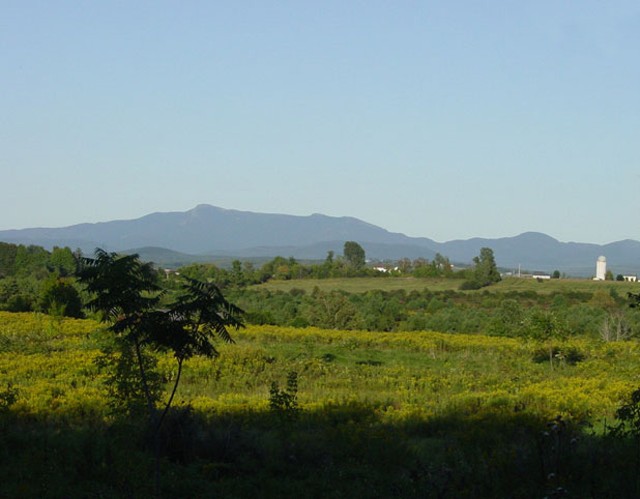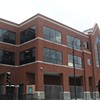Published October 15, 2008 at 5:56 a.m.
The Calkins natural area, in South Burlington, is a gently rolling expanse of wildflowers, hardwood forest and wetlands. Voters approved the city’s purchase of the 110-acre property, at the corner of Dorset and Swift streets, in 1992 with the understanding that it would be set aside for recreation. Sixteen years later, South Burlington’s comprehensive land-use plan still envisions nothing more intrusive than the “unpaved walking trails” that now meander through the area.
But on November 4, South Burlington voters will be asked to approve the use of 6 acres of the Calkins area for a 29,000-square-foot police station. The ballot measure has created a riff between land preservationists who fear the desecration of the city’s largest nature area and city officials who maintain that the Calkins property is the best and most affordable location for the new facility.
Opponents of the city’s plans are led by the South Burlington Land Trust, a group that formed about five years ago to keep an eye on development in the city, which has nearly doubled in population, to about 18,000, since 1970. Much of the land trust’s efforts have focused on protecting the city’s southeast quadrant, which includes the Calkins area, from high-density development.
Trust member Sandra Dooley is also a member of the South Burlington City Council. Last April, she was the only councilor to vote against a recommendation by a committee of citizens and city staff members to put the new station in the Calkins area. Since then Dooley, who was elected to council in 2007, has argued the property is clearly off-limits for development.
“When I started dealing with this and started reading the comprehensive plan and the language, my jaw dropped open,” Dooley recalled. “I thought, ‘Here it is — nothing but unpaved walking paths would be developed on this land.’ It was bought with that intent.”
Even Dooley agrees the police need a new headquarters. The current station was built in 1980, when the department was roughly half the size it is now. Police Chief Trevor Whipple said he “literally” has nightmares about the place, which is connected to City Hall.
“Functionally, it’s a disaster,” Whipple said. “If we happen to have a defendant and a victim in the building at the same time, they are in sight of each other. If we bring people in to speak to us, there’s no secure, private area to talk to them. If we have a disruptive person in custody, they have to endure that abuse as well.”
Whipple said the building also poses health risks to his force, which has grown to 40 sworn officers and seven civilians. The roof leaked for years until the city replaced it last month. Last week, workers discovered black mold behind a wall they were replacing.
“Before the roof was fixed,” Whipple said, “I had a ceiling tile falling down because it was water soaked, and the squirrels used to come in and peek at me through the crack.”
The city has been trying to come up with a plan for a new station since 2003, when the council first formed a committee to review potential sites. In 2006, two thirds of voters opposed a plan to tear down the station, along with City Hall, and rebuild at 575 Dorset. The committee reconvened and set out to find a parcel of city-owned property large enough for the new building and parking.
Among the half-dozen possibilities considered was 575 Dorset. But, the committee concluded, to rebuild there, the city would need to buy an adjoining property, construct a parking garage, and upgrade the infrastructure, adding as much as $3.5 million to the project’s cost. And that projection doesn’t include relocating the police and City Hall staff during the construction.
City Council Chairman Chris Smith, a former financial planner who now teaches history at Champlain Valley Union High School, said, “nobody is excited” about the prospect of building the new station in the Calkins area. But spending an additional $3.5 million to protect 6 acres of land the city already owns doesn’t make economic sense.
“That would be an absurd purchase price,” Smith said. “If we wanted to spend $3.5 million to buy open space, I’m pretty certain we could get hundreds of acres in the southeast quadrant, and that would be much a more logical and productive use of our money.”
The conflict over the public’s desire for open space and the cost of preserving rings familiar to Noelle MacKay, executive director of Smart Growth Vermont. The organization has agreed to provide “technical assistance” to the land trust in an effort to defeat the Calkins proposal at the polls. That will include taking part in a televised call-in show, organized by opponents, to air on CCTV two weeks before the election.
MacKay said she was surprised to learn the new station wasn’t planned for South Burlington’s City Center, a proposed mixed-use “growth center” between Williston Road and Kennedy Drive. The city has wanted to cluster commercial, residential, municipal and cultural development in the area for nearly two decades, but the concept has emerged slowly due to land costs and the need for new infrastructure.
“Your civic buildings and civic services are the heart of most of our traditional centers,” MacKay said. “So moving the police station to an area that is very rural does not, to us, seem like the way the future of land use in Vermont should be moving.”
MacKay said building in the Calkins natural area could open the door for further development of the property. That’s also the South Burlington Land Trust’s greatest fear.
Last Saturday, Michael Mittag, the treasurer and a founding member of the land trust, brought his two dogs for a walk around the Calkins area. Mittag followed a narrow grass path to a small rise that affords an unfettered view of farmland and open space all the way to the Green Mountains — a view, he pointed out, that would be all but destroyed by a 29,000-square-foot police station.
Mittag, who supports rebuilding at 575 Dorset, said the upcoming ballot measure puts voters in a difficult position. If they reject it, the city will have to go back to the drawing board for a proposal that voters will support, further delaying construction of the much-needed station.
If the measure passes, he believes residents will have voted against their own — and South Burlington’s — best interests.
“Voters are, in some sense, being guilted into approving this,” Mittag said. “We’re in a situation now where it is desperately urgent and expedient. That responsibility rests at the door of the council and the city administration, not the voters of South Burlington, who are going pay the penalty.”
Opponents of the proposed location of the police station facility will host a live call-in show on Tuesday, October 21, at 6 p.m. on CCTV. Click here to view the October 2 South Burlington Town Meeting on the facility.
More By This Author
Speaking of...
-

Home Is Where the Target Is: Suburban SoBu Builds a Downtown Neighborhood
Apr 16, 2024 -

State Will Build Secure Juvenile Treatment Center in Vergennes
Apr 15, 2024 -

Pauline's Café Closes in South Burlington After Almost Half a Century
Apr 15, 2024 -

After 33 Years, Cheese & Wine Traders in South Burlington Shutters Abruptly
Apr 1, 2024 -

Nikki Haley Plans Campaign Stop in Vermont on March 3
Feb 26, 2024 - More »
Comments
Comments are closed.
From 2014-2020, Seven Days allowed readers to comment on all stories posted on our website. While we've appreciated the suggestions and insights, right now Seven Days is prioritizing our core mission — producing high-quality, responsible local journalism — over moderating online debates between readers.
To criticize, correct or praise our reporting, please send us a letter to the editor or send us a tip. We’ll check it out and report the results.
Online comments may return when we have better tech tools for managing them. Thanks for reading.











































